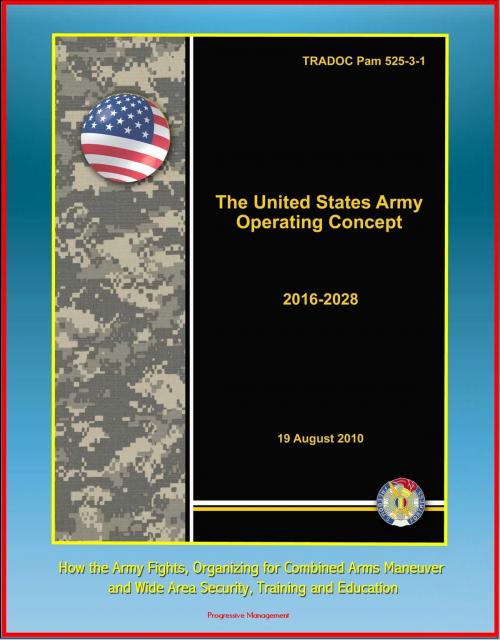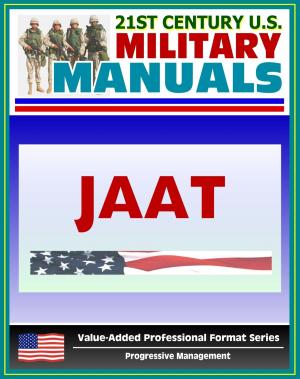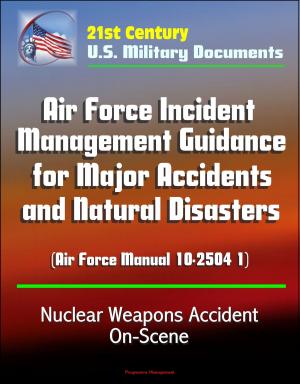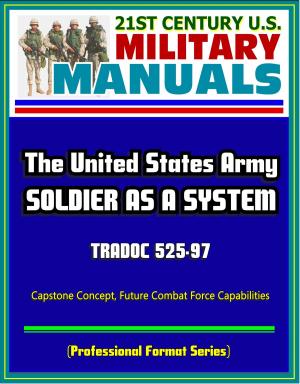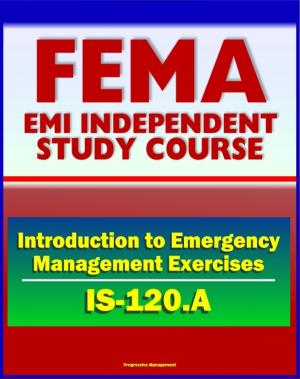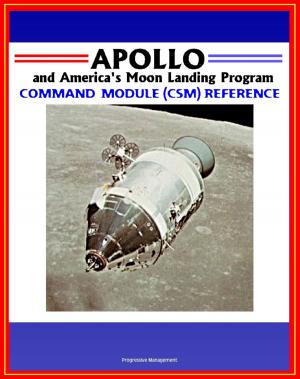The United States Army Operating Concept 2016-2028: TRADOC Pam 525-3-1, How the Army Fights, Organizing for Combined Arms Maneuver and Wide Area Security, Training and Education
Nonfiction, History, Military, Biological & Chemical Warfare, Strategy| Author: | Progressive Management | ISBN: | 9781476095943 |
| Publisher: | Progressive Management | Publication: | August 17, 2012 |
| Imprint: | Smashwords Edition | Language: | English |
| Author: | Progressive Management |
| ISBN: | 9781476095943 |
| Publisher: | Progressive Management |
| Publication: | August 17, 2012 |
| Imprint: | Smashwords Edition |
| Language: | English |
TRADOC Pam 525-3-1, The Army Operating Concept, describes how future Army forces conduct operations as part of the joint force to deter conflict, prevail in war, and succeed in a wide range of contingencies in the future operational environment. It describes the employment of Army forces in the 2016-2028 timeframe with emphasis on the operational and tactical levels of war. In addition to describing broadly how Army headquarters organize and direct the employment of their forces, the concept describes the major categories of Army operations and identifies the capabilities required of Army forces to guide and prioritize future force development. The ideas discussed in this document will guide revisions in Army doctrine, organizations, training, materiel, leadership and education, personnel, and facilities. These ideas will also enhance the integration of Army forces with a wide array of domestic and international partners.
The challenges of future armed conflict make it imperative for the Army to produce leaders and forces that exhibit a high degree of operational adaptability. Achieving the necessary level of operational adaptability requires the Army to build upon a foundation of two broad responsibilities within the framework of full-spectrum operations:
Contents: Foreword * Chapter 1 * Introduction * 1-1. Purpose * 1-2. The Army concept framework (ACF) * 1-3. Assumptions * 1-4. References * 1- 5. Explanations of abbreviations and terms * Chapter 2 * Operational Context * 2- 1. The Army's mission and military objectives * 2- 2. The future operational environment * Chapter 3 * How the Army Fights * 3- 1. Introduction * 3-2. The military problem * 3-3. Central idea: combined arms maneuver and wide area security * 3-4. Military solution * 3-5. Supporting ideas * Chapter 4 * Organizing for Combined Arms Maneuver and Wide Area Security * 4-1. Theater Army * 4-2. Corps * 4-3. Division * 4-4. Regionally aligned forces * Chapter 5 * Army Operations * 5-1. Introduction * 5-2. Full-spectrum operations * 5-3. Homeland defense and civil support * 5-4. Sustained engagement * 5-5. Entry operations * 5-6. Prevent proliferation and counter WMD * 5-7. Cyberspace operations * 5-8. Space operations * 5-9. Foreign humanitarian assistance * Chapter 6 * Training, Education, and Leader Development * Chapter 7 * Conclusion * Appendix A * References * Section I Required References * Section II Related References * Appendix B * Refined Army Capstone Concept Required Capabilities * B-1. Mission command * B-2. Intelligence * B-3. Movement and maneuver * B-4. Fires * B-5. Protection * B-6. Sustainment * B-7. Training and leader development * B-8. Institutional Army * B-9. Human dimension * Appendix C * Required Capabilities * C-1. Mission command * C-2. Intelligence * C-3. Movement and maneuver * C-4. Fires * C-5. Protection * C-6. Sustainment * C-7. ARSOF * C-8. SMDC * Appendix D * Implications for Joint and Interagency Partners * D-1. Introduction * D-2. What the Army provides the joint force * D-3. What the Army requires from joint and interagency partners * Glossary * Section I Abbreviations * Section II Terms * Section III Special Terms * Endnotes
TRADOC Pam 525-3-1, The Army Operating Concept, describes how future Army forces conduct operations as part of the joint force to deter conflict, prevail in war, and succeed in a wide range of contingencies in the future operational environment. It describes the employment of Army forces in the 2016-2028 timeframe with emphasis on the operational and tactical levels of war. In addition to describing broadly how Army headquarters organize and direct the employment of their forces, the concept describes the major categories of Army operations and identifies the capabilities required of Army forces to guide and prioritize future force development. The ideas discussed in this document will guide revisions in Army doctrine, organizations, training, materiel, leadership and education, personnel, and facilities. These ideas will also enhance the integration of Army forces with a wide array of domestic and international partners.
The challenges of future armed conflict make it imperative for the Army to produce leaders and forces that exhibit a high degree of operational adaptability. Achieving the necessary level of operational adaptability requires the Army to build upon a foundation of two broad responsibilities within the framework of full-spectrum operations:
Contents: Foreword * Chapter 1 * Introduction * 1-1. Purpose * 1-2. The Army concept framework (ACF) * 1-3. Assumptions * 1-4. References * 1- 5. Explanations of abbreviations and terms * Chapter 2 * Operational Context * 2- 1. The Army's mission and military objectives * 2- 2. The future operational environment * Chapter 3 * How the Army Fights * 3- 1. Introduction * 3-2. The military problem * 3-3. Central idea: combined arms maneuver and wide area security * 3-4. Military solution * 3-5. Supporting ideas * Chapter 4 * Organizing for Combined Arms Maneuver and Wide Area Security * 4-1. Theater Army * 4-2. Corps * 4-3. Division * 4-4. Regionally aligned forces * Chapter 5 * Army Operations * 5-1. Introduction * 5-2. Full-spectrum operations * 5-3. Homeland defense and civil support * 5-4. Sustained engagement * 5-5. Entry operations * 5-6. Prevent proliferation and counter WMD * 5-7. Cyberspace operations * 5-8. Space operations * 5-9. Foreign humanitarian assistance * Chapter 6 * Training, Education, and Leader Development * Chapter 7 * Conclusion * Appendix A * References * Section I Required References * Section II Related References * Appendix B * Refined Army Capstone Concept Required Capabilities * B-1. Mission command * B-2. Intelligence * B-3. Movement and maneuver * B-4. Fires * B-5. Protection * B-6. Sustainment * B-7. Training and leader development * B-8. Institutional Army * B-9. Human dimension * Appendix C * Required Capabilities * C-1. Mission command * C-2. Intelligence * C-3. Movement and maneuver * C-4. Fires * C-5. Protection * C-6. Sustainment * C-7. ARSOF * C-8. SMDC * Appendix D * Implications for Joint and Interagency Partners * D-1. Introduction * D-2. What the Army provides the joint force * D-3. What the Army requires from joint and interagency partners * Glossary * Section I Abbreviations * Section II Terms * Section III Special Terms * Endnotes
